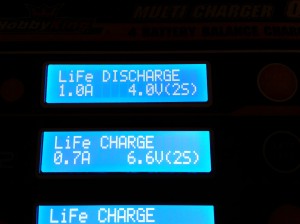Do you ever feel the pain when your battery betrayed you during a key moment at an RC sailing competition? I hope not, because I felt it two times during the years, it was horrible.
So what can we do to avoid this disaster?
In Hungary we are at the beginning of the new season in RC sailing and it’s time for thinking about the batteries. Old batteries can cause suffering at the first competitions if they aren’t in good conditions.
But what does „not in a good condition” mean in case of a battery? There is a method with multimeter to detect the bad cells, but not nearly everybody has this device, and also just a few RC sailors can use it correctly. I don’t like this method.

I use my battery charger to detect bad batteries. I think this is an easy way and everybody can do it during winter battery maintenance. Just an ordinary programmable charger is good for this which is able to discharge batteries beside the charging function. This is how I detect bad batteries:
- Discharge the battery: I discharge the NIMH batteries to 1.0V/cell, in case of Life and Lipo batteries this voltage value is built in the charger.

- Charge the battery: I charge it like in any other normal case

- At the end of the charging method check how much mAh got into the battery. Compare it with the real value written on the battery: At this point I have a feedback of the condition of the battery.

- Discharge the battery again.

- At this point I have the full feedback of the battery condition, because I know how much mAh was in the battery and how much could it perform from it during the discharge.
- It’s judgment time: In step 5. if the battery performance is under 80-90% comparing to the step 3 than it’s time for thinking about buying a new one. If the performance is above 90% than it is still OK and I just made a battery maintenance with discharging and charging. (In the example pictures the batteries are 700mAh Life 2S packs, at the second discharge the 650mAh discharge value is over 90%, so I should keep that pack.) This case I always charge the batteries again, they don’t like to be fully discharged for a longer time.
I hope this post will be useful for you in RC sailing! In my next one I would like to show which type of batteries I use in my RC boats.
Live your dreams!
Csóka László








